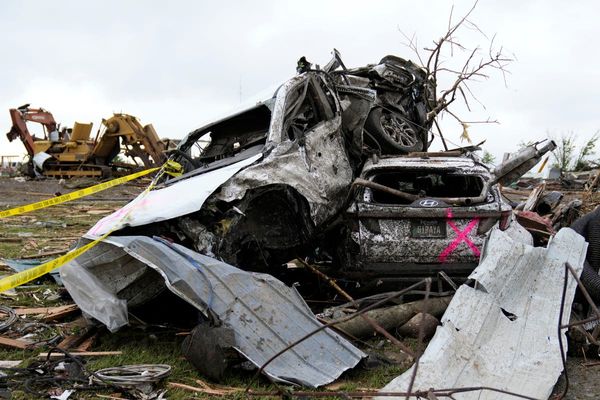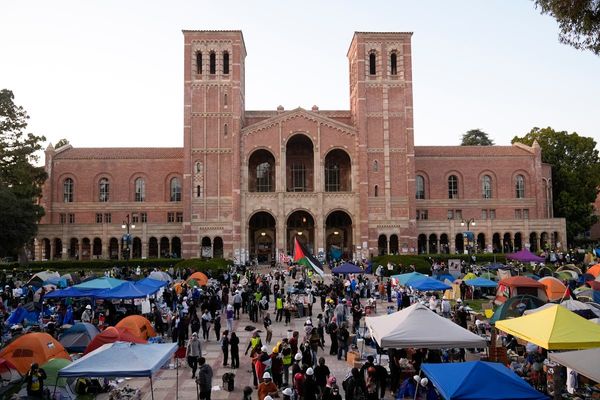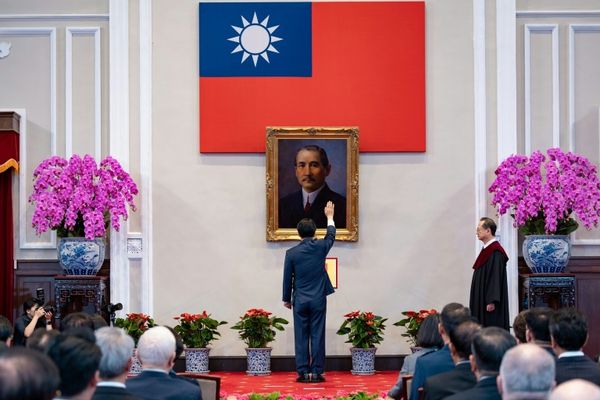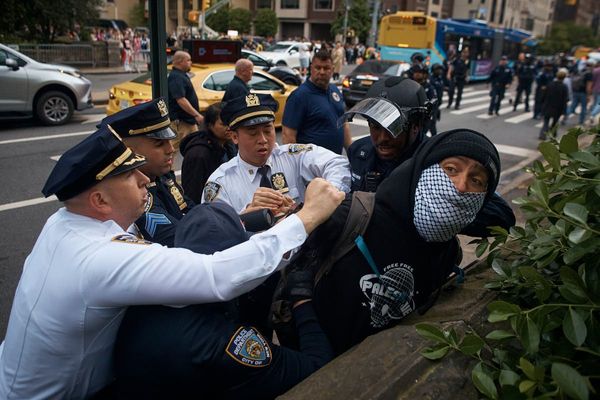
Some of Queensland’s biggest consumers agreed to cut their power use on Monday to help the grid avoid blackouts, and similar requests could be made in New South Wales on Tuesday if regulators maintain forecasts for potential electricity shortfalls.
The Australian Energy Market Operator (Aemo) on Monday afternoon started talks with big consumers under its Reliability and Emergency Reserve Trader (Rert) scheme to head off a gap projected at one stage to be 1,454 megawatts in Queensland at 5.30pm.
Later notices trimmed that supply shortfall to be about 1,147MW, with officials confident there would not be a blackout. But supply could be tight for days to come, with periods of shortfalls forecast for New South Wales and Queensland on Tuesday, although some were later cancelled.
NSW initially had a forecast shortfall of 409MW at 7pm on Tuesday although the Aemo notice nudged more generators into the market and the risks had eased by later on Monday.
In a statement, Aemo said: “Despite there being sufficient physical generation capacity in Queensland today, Aemo is taking steps to address a critical electricity supply shortfall presently forecast for 6pm to 8pm AEST today.”
“To maintain power system security and reliability, Aemo is using its powers under the national electricity rules, including to direct generators, to alleviate lack of reserve conditions.”
Only two weeks into winter, the season has already been a trying one for regulators and Anthony Albanese and the new federal government.
A short-lived gas shortage in Victoria and soaring wholesale power prices linked mainly to the ongoing poor performance of coal-fired generators suggest the winter will be marked by soaring bills and regulators having to intervene often to keep the lights on and heaters running.
Former prime minister Malcolm Turnbull on Monday called on governments to order gas exporters to hold back more supply for Australia and to lower prices.
“I don’t remember seeing a forecast [lack of reserve level 3] anywhere this big,” said the founder of consultancy Global-Roam and an author of the WattClarity website, Paul McArdle, referring to an early projection of a 1,454MW shortfall that was close to Brisbane’s usage.
Complicating things was Aemo’s imposition of a $300/MW-hour cap on wholesale power generation prices in Queensland late on Sunday after cumulated prices had passed a set threshold. That price limit could last at least a week, McArdle and officials said.
The same price cap of $300/MW-hour was applied in NSW from Monday evening. Declarations were subsequently made for South Australia and Victoria too.
And the price cap has kicked in for NSW… pic.twitter.com/b1Aeoyx5Fo
— Peter Hannam (@p_hannam) June 13, 2022
“There are lots of generators that can’t make money with the spot price at $300 consistently” given the rising cost of gas and coal on global markets after Russia’s invasion of Ukraine and subsequent sanctions on that major energy exporter, McArdle said.
For instance, gas costing $40 a gigajoule – the current price in parts of eastern Australia – translates into about $400/MWh, breakeven for a gas-fired power station.
Similarly, pumped hydro sites such as Wivenhoe can’t buy low and sell high when the spot price was at $275/MWh during “low” times and they aren’t able to sell for more than $300/MWh.
Overnight, Queensland had almost 3,300MW capacity of coal offline for maintenance or other issues and 1,600MW of gas offline. Add in the absence of solar at night and now wind, and the state’s capacity was down by 9,000MW.
“The coal plants that were off [including three units at Callide and three at Gladstone] maybe can’t come back quickly,” McArdle said. An extended cool spell, including rains that affected coal supplies and clouds that limited solar output, meant coal plants had been run harder than usual for this time of year.
“This is bad and it could have cascading effects” to other parts of the national grid that serves eastern Australia, he said.
“This is going to last for a long, long time,” McArdle said. “Everything that’s off, you’ve got to get it back as quick as you can.”
"Interesting" how about ~2GW of capacity suddenly unavailable following application of administered pricing.
— Dylan McConnell (@dylanjmcconnell) June 13, 2022
Seems some generators gaming the compensation regime. pic.twitter.com/4lKA3gGYhJ
Dylan McConnell, an analyst from the University of Melbourne, said regulators would examine closely the behaviour of key generators to see if there was any potential gaming of the markets. Generators could be ordered to provide supply to avoid blackouts, he said.
Queensland’s energy minister, Mick de Brenni, said he was confident the state could avoid blackouts but he called on people to limit unnecessary power use.
“The Australian Energy Market Operator has said the forecast possible shortfall in energy generation this evening and tomorrow morning with the cold weather is being managed through its market mechanisms and is confident the gap will be resolved contingent upon an appropriate response from market participants,” he said.
“The Queensland electricity transmission provider has asked that consideration is given to turning off unused appliances and this will provide more comfort in the system. Commercial and industrial users are also contributing by managing energy use around peak demand, as they ordinarily do.”
And tomorrow two periods of possible electricity supply gaps in QLD… pic.twitter.com/5zxhIrtvvi
— Peter Hannam (@p_hannam) June 13, 2022
The NSW energy minister, Matt Kean, tweeted on Monday night that: “Given the current challenges in the energy system, I have been receiving regular briefings from Aemo. I’ve been informed the situation is under control, with Aemo directing generators to ensure there is enough supply online when it’s needed.”
A spokesperson for the federal energy minister, Chris Bowen, earlier said he had been in “regular contact” with Aemo and de Brenni.
“This situation has been brought about by further unscheduled outages, which has meant the price cap has applied,” the spokesperson said. “This has, in turn, required further interventions by Aemo.
“Aemo has been active in requiring generators to dispatch more power, which appears to have avoided the need for major load shedding in the short term. Again, we are seeing the results of a decade of failure to plan for the rapidly changing energy market.”
The head of consultants EnergyQuest, Graeme Bethune, said it was “particularly mystifying” how the “crazy electricity” prices had been blamed on gas when that fuel was mostly used for generation in South Australia and Queensland, but at smaller amounts. The main culprit was the coal plants being out of action, he said.
“One of the remarkable things is that now you need gas backup for unreliable coal. The problem is that the size of coal is much bigger than the size of gas – so you need a huge amount of reliable power to back up coal.”
The head of the Clean Energy Council, Kane Thornton, said “the reality is that coal’s coming out” but governments had not ensured there was enough renewable energy and storage to fill the gap.
“Because of the policy uncertainty and political silliness, we haven’t brought in enough renewables ahead of time,” Thornton said, adding that the pipeline of committed projects has been shrinking in Australia for the past three years.
“The projects are ready, the investors are willing and enthusiastic,” he said. “There’s a bunch of projects that are ready to go and they can happen very quickly if the will is there to make it happen.”







